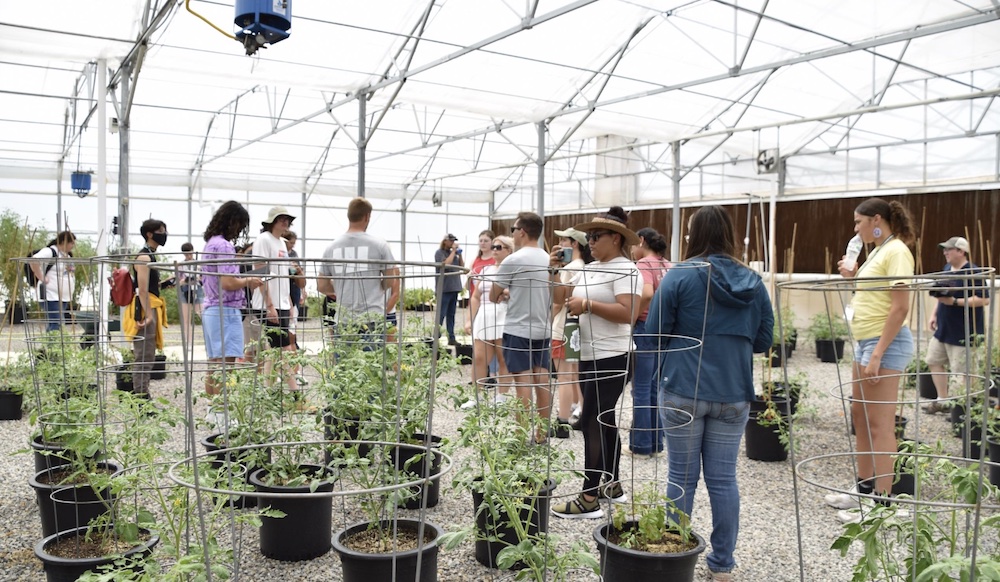
- Details
- By Chez Oxendine
- Food | Agriculture
As nearly two-thirds of the farmers in America approach retirement age, many Native ag organizations consider it imperative to interest and involve the next generation of producers and agricultural industry workers in agriculture from the jump.
It’s a matter of increasing urgency as 62% of the country’s farmers will reach retirement age by 2027, according to a report by analysis firm USA Facts. As well, more than 30% of Native farmers were over 65 years old, according to the most recent USDA census data available.
By comparison, just 9% of Native farmers were younger than 35 years old.
The need for future Native farmers and other participants in the agriculture industry has prompted events like the Indigenous Food and Agriculture Initiative at the University of Arkansas’ Leadership Summit. That event brings together college students from across the country to network with each other and industry professionals, visit farm operations, and discuss how to enter the Native agriculture industry.
As other groups fret about the rate of retiring farmers versus new ones entering the field, IFAI Next Generation Program Manager Summer Wilkie said she sees keen interest from the students who visit the organization’s program.
“Each year there's been consistently more interest, and we expect this summer, and we anticipate having even more interest than last year,” Wilkie told Tribal Business News. “We're seeing interest increase among Native American youth. They're very interested in food sovereignty and improving food security and sovereignty in their nations.”
Similar work has gone on at Dream of Wild Health, an agriculture and food sovereignty nonprofit based in Minneapolis. Dream of Wild Health hosts several youth-oriented classes and events for kids from 8 to 18 years old. Those programs include Cora’s Kids, a four-day program for younger children, and Garden Warriors, a three-week session for teenagers.
Once kids have participated in the Garden Warriors program, they can go on to become youth leaders supporting the organization’s other activities, per the Dreams of Wild Health youth program page.
Speaking at an event celebrating the organization’s 25th anniversary, Vice-Chair Carly Bad Heart Bull said these programs represented an opportunity for Native youth to reconnect to the land around them and each other.
“I have nieces who are Garden Warriors and love it. My son is growing up to be a Garden Warrior,” Bad Heart Bull told attendees. “Knowing that our children have this opportunity to be connected to the land, this opportunity to understand how the world works in a different way and from a cultural lens is so incredibly important.”
IFAI Communications Director Mary Belle Zook said sparking that interest among Native youth was what prompted the Initiative to begin the summit in the first place. Between field trips to existing operations, discussions with industry professionals and leaders, and classes held over the course of the week-long summit, students often wanted to take ideas back to their tribes for use in promoting new programs and careers.
Sometimes that meant going back to tribal councils with proposals for meat-processing plants, or new farming initiatives. Other times, that means simply building off the network that students and youth build during the summit and utilizing their newfound connections with industry participants, Zook said.
“We just try to expose them to a really broad network and remind them that these people are all available to them as resources to ask for help and get ideas or ask for advice or whatever that amounts to, that they have those kinds of role models and network,” Zook said. “What I love from it personally is seeing them go back to their communities and enact changes there. It's really great seeing that ripple effect happening.”
Applications for IFAI’s Leadership Summit are open through April 1. The event will be held from July 15 to July 23, and is open to recently graduated high school students or college students ages 18-24. All travel and expenses are covered for accepted applicants. Applications for the summit can be found here.
“We try to remove any barriers to participation that we possibly can,” Wilkie said. “We do our best to get the message out far and wide so that we're reaching anyone from a young person helping with their family farm to someone planning to go medical school and is interested in addressing health disparities. We like that diversity and people coming from all over.”
Other agricultural programs and resources of Native youth
- First Nations’ Development Institute Indigenous Food Systems Community of Practice
- Early agricultural financing and educational material through Native Community Development Financial Institution Akiptan
- Scholarships, internships, and advisory positions available through the Intertribal Agriculture Council - applications for each due by March 29
Fall, Spring, and Summer annual internship cohorts at the Native American Agriculture Fund
